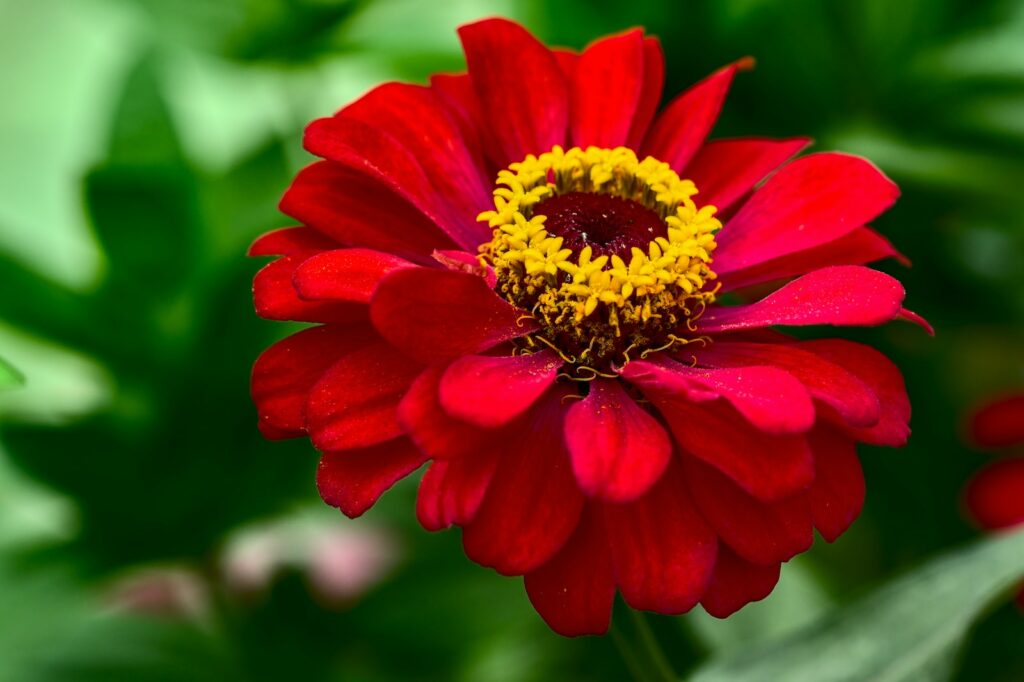
Deer are a common sight in many gardens and yards, and while they can be a beautiful addition to the landscape, they can also be a nuisance. One of the biggest concerns for gardeners is whether deer will eat their plants, particularly their flowers. Zinnias are a popular choice for many gardeners due to their bright colors and easy maintenance, but will deer eat them?
The answer is not a simple yes or no. While deer are known to eat a wide variety of plants, including flowers, they tend to avoid zinnias. Zinnias have a bitter taste and a strong scent that deer find unappealing. However, this does not mean that zinnias are completely safe from deer. In times of drought or food scarcity, deer may be more likely to eat plants that they would normally avoid. Additionally, young or newly planted zinnias may be more vulnerable to deer browsing than established plants.
Table of Contents
Understanding Deer Diet
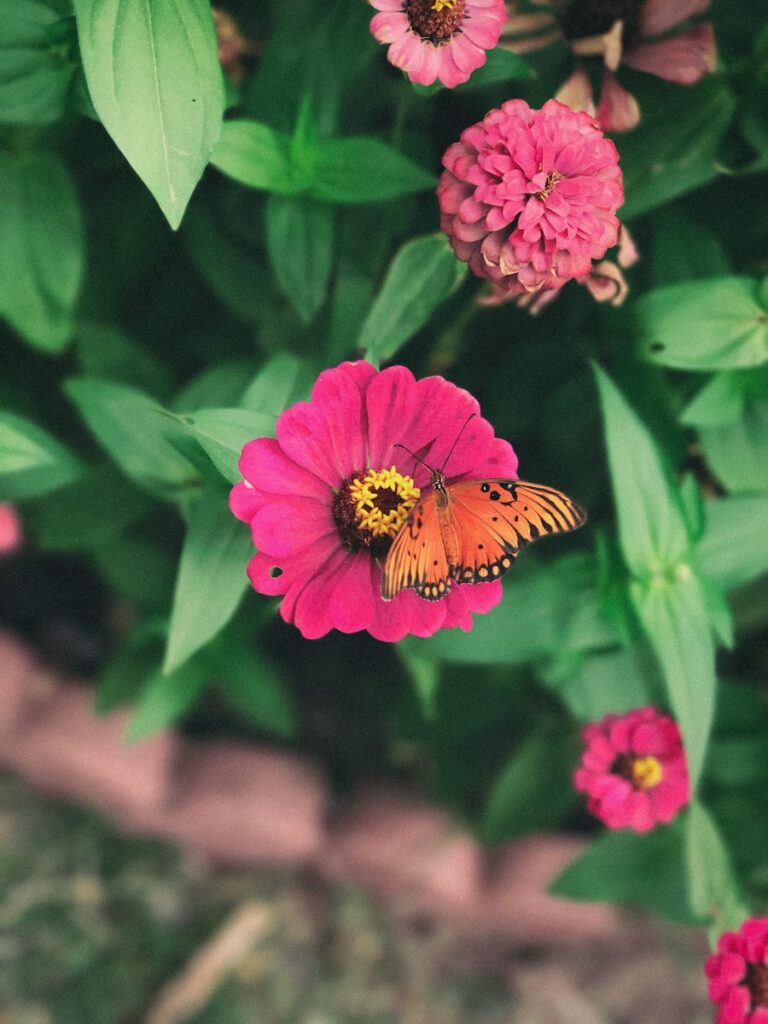
Deer are herbivores that feed on a variety of plant materials, including grasses, shrubs, trees, and fruits. Their diet changes depending on the season, availability of food, and their nutritional requirements. Understanding deer diet is essential for gardeners and farmers who want to protect their crops from deer damage.
Nutrition
Deer require a balanced diet that provides them with the necessary nutrients, including protein, carbohydrates, fats, vitamins, and minerals. The quality and quantity of the food they eat affect their overall health and reproductive success. In general, deer prefer food that is high in protein and low in fiber.
Food Sources
Deer feed on a wide range of food sources, including corn, berries, nuts, legumes, bark, shrubs, trees, and grasses. They are opportunistic feeders and will eat whatever is available in their environment. In the winter months, when food is scarce, they may resort to eating woody plants and tree bark.
Diet
Deer have a selective diet and will choose their food based on its nutritional value and availability. They prefer to eat young, tender shoots and leaves, which are high in protein and low in fiber. They also have a sweet tooth and will eat fruits and berries when they are in season.
Zinnias
Zinnias are not a preferred food source for deer. They are not high in protein and have a tough, fibrous texture that makes them difficult to digest. However, if deer are hungry and other food sources are scarce, they may eat zinnias as a last resort.
In summary, deer have a diverse diet that changes depending on the season and availability of food. While they may eat zinnias if other food sources are scarce, they are not a preferred food source due to their low nutritional value and tough texture.
Zinnias and Deer
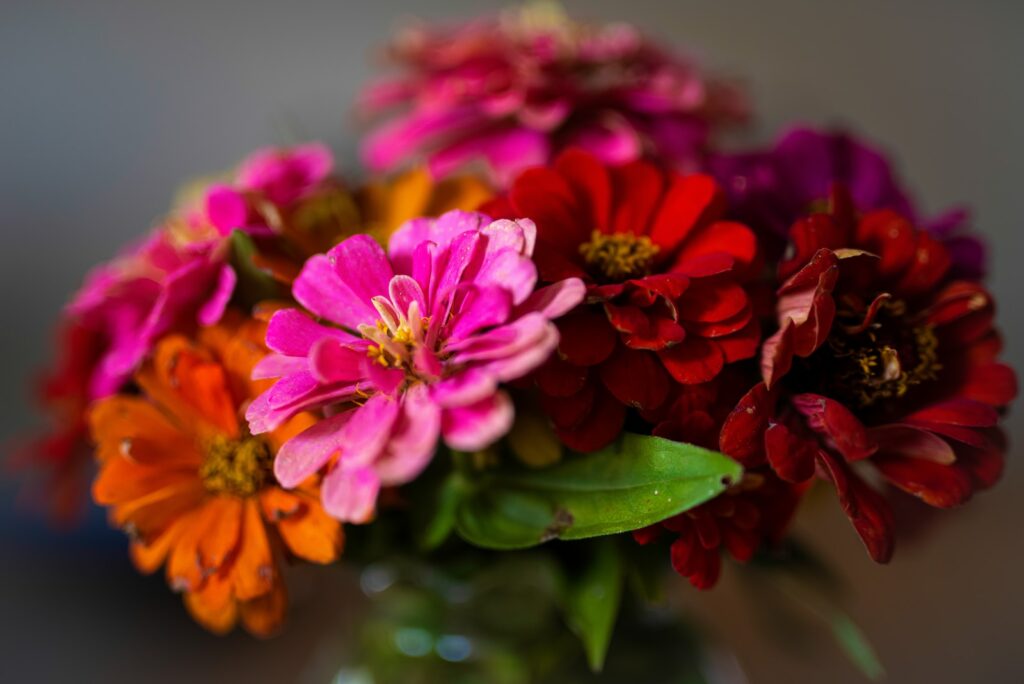
Zinnias are known for their colorful blooms and are a popular summer flower. However, if you have a deer problem in your garden, you may be wondering if deer will eat your zinnias.
Deer are known to eat a wide variety of plants, including flowers. Unfortunately, zinnias are not an exception. Deer will eat zinnias if they are hungry enough, although they may not be their first choice.
Zinnias are not toxic to deer, and some deer may enjoy the taste of zinnias. However, they may not find them as palatable as other plants, and they may avoid them if there are other food sources available.
If you want to plant zinnias in an area with a high deer population, it is recommended that you plant them in a location that is not easily accessible to deer. You can also try using deer repellents or fencing to keep them away from your zinnias.
Zinnias come in many varieties, but the most common is Zinnia elegans. This species prefers full sun and well-draining soil. Zinnias are also a popular choice for cut flowers, as they have a long vase life and come in a wide range of colors.
In conclusion, while deer may eat zinnias, they may not find them as tasty as other plants. If you want to grow zinnias in an area with a high deer population, it is recommended that you take measures to keep the deer away from your plants.
Deer-Resistant Plants
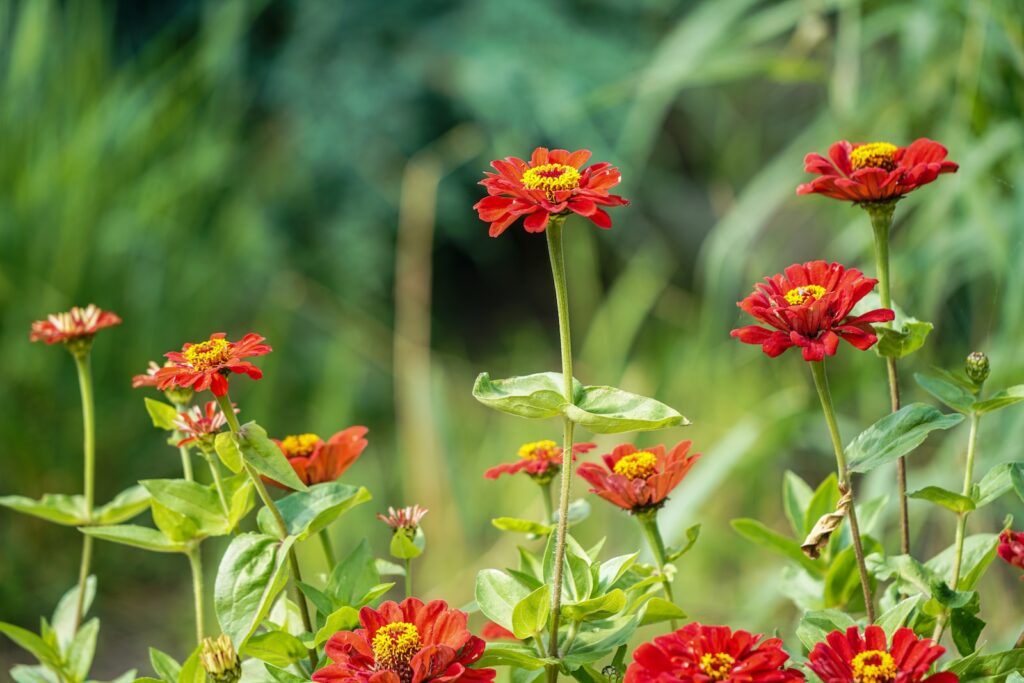
When it comes to gardening, deer can be a major issue for many people. They can cause significant damage to plants and flowers, leaving gardeners frustrated and disappointed. However, there are certain plants that are considered deer-resistant, meaning they are less likely to be eaten by these animals.
Some examples of deer-resistant plants include marigolds, foxglove, daffodils, lavender, sunflowers, snapdragons, bleeding heart, yarrow, poppy, hydrangeas, peonies, African lilies, geraniums, bearded irises, and sages. These plants either have a strong scent, taste, or texture that deer find unappealing, making them less likely to be eaten.
It’s important to note that while these plants are considered deer-resistant, they are not completely foolproof. In times of extreme hunger or drought, deer may still eat them. Additionally, deer-resistant plants may vary in effectiveness depending on the region and the specific deer population.
If you’re looking to plant deer-resistant flowers in your garden, it’s important to do your research and choose the right plants for your area. You can also use physical barriers, like fences or netting, to protect your plants from deer. By planting deer-resistant plants and taking necessary precautions, you can help protect your garden from these pesky animals.
Natural Deer Repellents
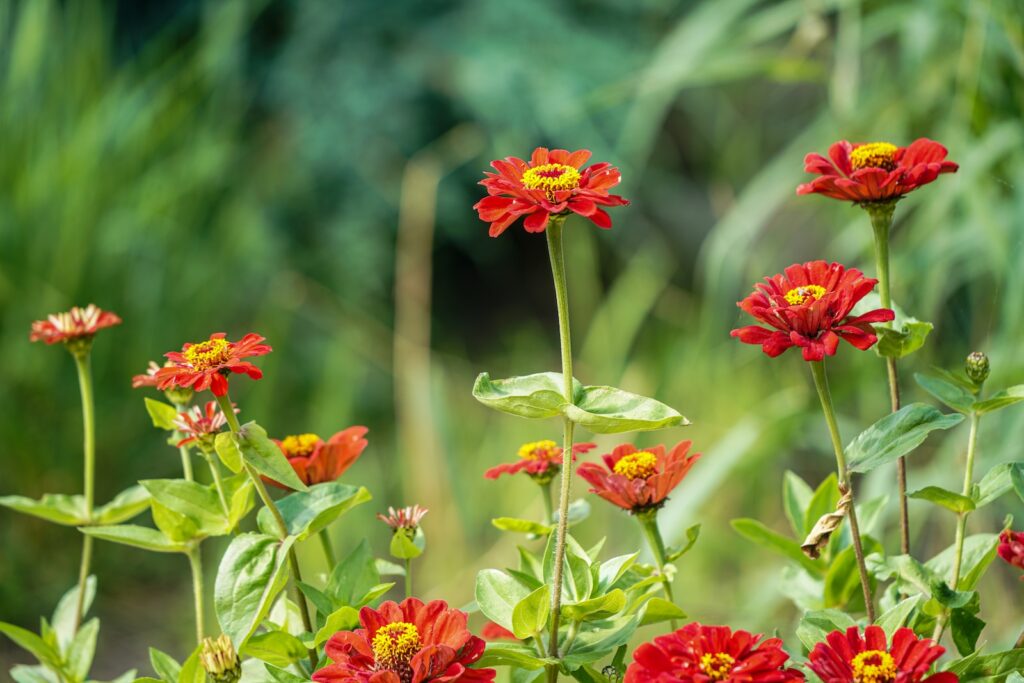
There are many natural deer repellents that can be used to keep deer away from gardens and plants. These repellents work by using fragrances and odors that deer find unpleasant or unappetizing. Here are a few natural deer repellents that can be used:
Plants and Herbs
Certain plants and herbs have natural fragrances that deer find unpleasant. These include:
- Lavender
- Mint
- Sage
- Thyme
- Rosemary
Planting these around a garden can help repel deer.
Soap and Hair
Deer have a strong sense of smell, and certain fragrances can be used to repel them. Hanging bars of soap or bags of human hair around a garden can help keep deer away.
Predator Urine
Deer are naturally afraid of predators, and the scent of predator urine can be used to repel them. Products containing coyote or wolf urine can be sprayed around a garden to keep deer away.
Other Repellents
There are many other natural deer repellents available, including sprays made from garlic, hot peppers, and other strong-smelling substances. However, it is important to note that not all of these repellents are effective, and some may even attract deer. It is important to research and choose a repellent that has been proven to work.
Overall, natural deer repellents can be an effective way to keep deer away from gardens and plants. By using fragrances and odors that deer find unpleasant, these repellents can help protect plants without harming the deer themselves.
Fencing and Other Physical Barriers
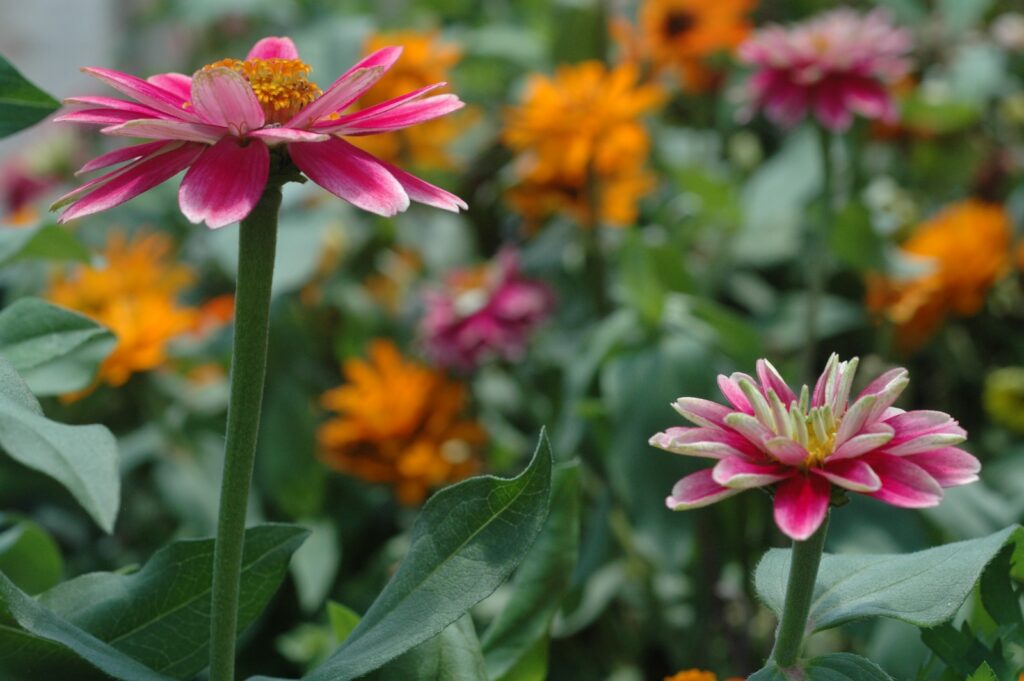
One effective way to keep deer away from zinnias is to use fencing or other physical barriers. Fences can be made of a variety of materials, including wood, metal, or plastic. A solid fence that is at least 8 feet tall is the most effective at keeping deer out. However, this type of fence can be expensive and may not be practical for all gardens.
Another option is to use netting or mesh to create a barrier around the zinnias. This can be less expensive than a solid fence and can be more practical for smaller gardens. Netting should be at least 7 feet tall to be effective.
Natural barriers can also be used to keep deer away from zinnias. These can include planting thorny or prickly plants around the zinnias, such as holly or barberry. Deer are less likely to try to eat zinnias if they have to navigate through thorny plants to get to them.
Motion-activated sprinklers and motion sensors can also be effective at keeping deer away from zinnias. When a deer approaches the garden, the sprinklers will turn on and scare the deer away. Motion sensors can be used to trigger lights or loud noises that will also scare deer away.
Overall, using fencing or other physical barriers is an effective way to keep deer away from zinnias. It is important to choose a barrier that is appropriate for the size of the garden and the budget of the gardener.
Dealing with Deer Damage
Deer can cause significant damage to gardens and landscaping, especially during the growing season. One of the most common problems that gardeners face is deer browsing on their plants, including zinnias. Here are some tips on how to deal with deer damage:
- Physical barriers: Fencing is one of the most effective ways to keep deer out of your garden. A fence that is at least 8 feet tall is recommended, as deer can jump up to 6 feet high. Electric fences can also be effective, but they require more maintenance and can be expensive.
- Repellents: There are many types of deer repellents available on the market, including sprays, granules, and electronic devices. Some repellents work by emitting a scent that deer find unpleasant, while others use ultrasonic sound waves to deter deer from entering your garden.
- Plant selection: Choosing plants that deer are less likely to eat can also help reduce damage. Some deer-resistant plants include lavender, daffodils, and marigolds. However, it’s important to note that no plant is completely deer-proof, and deer may still eat plants that are considered “resistant.”
- Companion planting: Planting herbs and other plants that deer find unappealing next to your zinnias can also help reduce damage. Some examples of companion plants include garlic, chives, and mint.
- Scare tactics: Some gardeners have had success using scare tactics to deter deer, such as hanging shiny objects or using motion-activated sprinklers.
It’s important to remember that deer damage is a common problem, and there is no one-size-fits-all solution. By using a combination of these methods and experimenting to see what works best for your garden, you can help protect your zinnias and other plants from deer browsing.
Zinnias and Other Pests
Zinnias are a popular choice for gardeners due to their vibrant colors and easy maintenance. However, they are not immune to pests. Here are some common pests that may affect zinnias and how to deal with them:
Ants
Ants are attracted to the sweet nectar produced by zinnias. While they do not directly harm the plant, their presence can attract other pests such as aphids. To deter ants, sprinkle cinnamon or cayenne pepper around the base of the plant.
Rabbits
Rabbits are known to nibble on zinnias as well as other plants in the garden. To protect your zinnias from rabbits, install a fence around the garden or use a rabbit repellent spray.
Aphids
Aphids are small insects that suck the sap from the leaves and stems of zinnias. They can cause stunted growth and yellowing of the leaves. To control aphids, spray the plant with a solution of water and dish soap or use neem oil.
Neem Oil
Neem oil is a natural insecticide that can be used to control a variety of pests including aphids, slugs, and spider mites. It works by disrupting the insect’s hormonal balance and preventing them from reproducing.
Slugs
Slugs are nocturnal pests that can damage zinnias by eating holes in the leaves. To control slugs, set up beer traps or sprinkle diatomaceous earth around the base of the plant.
In conclusion, while zinnias are generally easy to care for, they are not immune to pests. By taking preventative measures and using natural pest control methods, gardeners can keep their zinnias healthy and beautiful.
Zinnia Care and Maintenance
Zinnias are hardy plants that require minimal care and maintenance. Proper care can help zinnias thrive and produce vibrant blooms throughout the growing season.
Planting and Watering
Zinnias should be planted in the spring after the last frost. They prefer well-drained soil and full sun exposure. Water zinnias regularly, especially during drought conditions, to keep the soil moist. Overwatering can lead to root rot, so it’s important to strike a balance.
Leaves and Deadheading
Zinnias are part of the aster family and produce fragrant flowers that attract butterflies and bees. To encourage more blooms, it’s important to deadhead spent flowers regularly. This will also help prevent the plant from going to seed too quickly. Removing yellow or damaged leaves can also help keep the plant healthy.
Companion Plants and Flowering Shrubs
Zinnias make great companion plants for other flowering shrubs and perennials. They pair well with rhododendrons, marigolds, and snapdragons. Planting zinnias with other fragrant flowers can also help deter pests and attract beneficial insects.
Mature Plants and Winter Care
Mature zinnias can grow up to three feet tall and require little maintenance. In the fall, it’s important to cut back the plants to prevent disease and pests from overwintering. Covering the plants with a layer of mulch can also help protect them from harsh winter conditions.
Seedlings and Care Tips
Zinnia seedlings should be started indoors six to eight weeks before the last frost. Once the seedlings have sprouted, they can be transplanted outdoors. It’s important to space the plants properly to prevent overcrowding and disease. Regular fertilization with a balanced fertilizer can also help promote healthy growth.
In summary, zinnias are hardy plants that require minimal care and maintenance. Proper planting, watering, and deadheading can help zinnias produce vibrant blooms throughout the growing season. Planting zinnias with other fragrant flowers and companion plants can also help deter pests and attract beneficial insects.